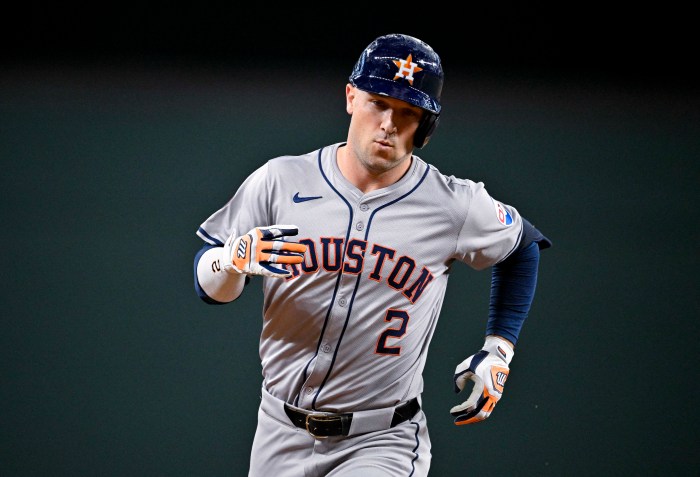Queens Boulevard in and around Sunnyside was teeming with people on the day the lights went out. Wave after wave of businesspeople and blue-collar workers, the elderly and teenagers, swarmed east in a mass exodus that began for many in Manhattan, and for many more meant a long, hot journey on foot.
But for all of the chaos that might have occurred, especially given the 1977 blackout, Queens residents were taking it all in stride.
"I didnt think its terrorism," said Teri Coyne, a Forest Hills resident who still had a quite way to go before getting home. "I think its a big mistake. But Im impressed by how calm everyone is. I came from Manhattan across the bridge, but I did it on 9/11, too. We had an evacuation plan, so it was okay. For the most part, people are not panicking."
When the blackout began at 4:10 p.m., New York City all but shut down as people flocked to their cars and battery-powered radios only to learn that the outage was spread out as far as Ohio, Detroit and parts of Canada. As people started on the trek homeward or, in some cases, to the houses of friends and relatives, Queens Boulevard became more and more congested with cars creeping cautiously through intersections. Lines for the buses stretched around blocks.
Pam Bryant of Jamaica, who was taking a break on a park bench, was worried, but not too worried.
"This is New York. In New York everything happens and we seem to be handling it well. I walked from Union Square all the way to here. I must say, though, that there dont seem to be as many shuttle buses as there could be."
Store owners and employees kept their doors open, hawking everything from batteries and flashlights to pizza and cold water. Some took their businesses onto the sidewalk, where they cleaned up selling chilled drinks at regular, and often reduced, prices. Ice cream trucks were swamped with folks who wanted to beat the heat with a cold cone. At stores like the 24-hour Fast Break, there was a constant stream of people coming in for drinks and food. Some people asked about candles, but these were in short supply.
"We dont stock many disaster items because they dont sell," said William Chai, of Fast Break. "We only had five or six candles."
Conditions under New York were worse, but according to one Sunnyside resident who was trapped in the subway, people were calm, collected and didnt lose their heads, even during the dark walk to the closest station.
"Everybody was pretty cool about it," said Lachlan Macleay, a resident of Sunnyside. "There was no air conditioning, so it got really hot, but we still had lights inside the train. It was like being in a sauna. The only people who got kind of nervous were the elderly."
After his ordeal, Macleay headed to one of the neighborhood pubs, most of which were open and had coolers filled with cold bottles of beer and buckets of backup ice. Throughout the evening, people flocked to the closest watering hole to have a few cold ones by candlelight, huddle around radios for the latest updates and whoop it up with old friends and new ones. Some people, though, simply had no place else to go.
"Im pretty mad. I have to go to the Bronx and I dont know how Im going to get there," said Tony Pace of Pelham Bay, who had come to Sunnyside that morning to visit a friend. "I started to worry because I didnt know what I was going to do. I could have called my father to come pick me up, but hes 75 years old."
For most people, though, the blackout was a time to bring folding chairs, candles and radios out onto their front stoops, to meet the neighbors they had been living next to for years and to slow down for a few hours. Impromptu street parties went on late into the night, where, for once, the sky was filled with stars. And, as always, what could have been the worst, brought out the best in New York.































